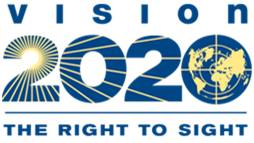 The magnitude of blindness-related problems in developing
The magnitude of blindness-related problems in developing
countries is often overlooked among reports on epidemics or other public health
problems. However, an estimated 284
million people worldwide are visually impaired, 90% of which live in
developing countries. It is claimed that 80% of all cases of blindness are due
to causes which could have been prevented, treated or cured.
Cataract is named as the leading cause of visual impairment
in developing countries, accounting for 47% of cases. Exposure to ultraviolet radiation, a
common consequence of the tropical environment experienced in many of these
countries, continues to be the main cause of the condition. Other major
causes of blindness include glaucoma, CMV retinitis, age-related
degeneration and retina damage due to diabetes.
World
Sight Day 2011, an event marked by organizations around the world, aims to
focus global attention on blindness, visual impairment and rehabilitation of
the visually impaired. Resulting programs such as ‘Vision 2020: Right to Sight’,
launched by WHO and the IAPB in 1999, aim to decrease the number of blind
people worldwide from 75 million to 24 million by 2020.
A recent article
published in Journal of the International AIDS Society documents the
feasibility of training primary care AIDS clinicians to diagnose and treat CMV
retinitis, one of the major opportunistic infections of HIV/AIDS, in a
resource-limited setting.
A recent success story, whereby functional sight was
restored in a man’s right eye after experiencing 55 years of blindness due to
total hyphema, neovascular glaucoma, high intraocular pressure and a detached
retina, is documented in a case report published
in Journal of Medical Case Reports.
Comments